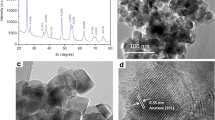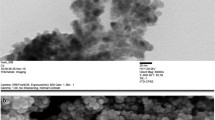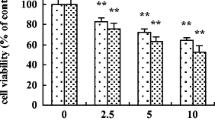Abstract
Cadmium (Cd) is a non-essential, highly toxic heavy metal and a ubiquitous environmental contaminant. Evidence exists that Cd can affect parameters which are of great importance in the response towards xenobiotics. However, there is a lack of information about the mechanisms that take place at the cellular and molecular levels upon dual exposure to Cd and other toxins. The purpose of the present work was therefore to examine the biochemical interactions between Cd and a well-known genotoxic hepatocarcinogen, 2-acetylaminofluorene (AAF) in isolated rat hepatocytes. The cells were incubated for 10 hr with a sub-cytotoxic concentration (0.22 μM) of 109Cd. This was followed by a 10 hr exposure to 1 μM [3H]AAF. Cellular distribution of Cd and 3H was determined. Sephadex G-75 elution profiles of the cytosol showed that Cd was almost entirely associated with the intermediate molecular weight (IMW) fractions containing metallothionein (MT) (>80%), and with high molecular weight proteins. In parallel, the highest proportion of 3H was found in the low molecular weight components. Further analysis of IMW fractions by DEAE A-25 anion-exchange chromatography revealed that, in addition to Cd, there was some 3H which coeluted along with MT-I and MT-II isoforms, but preferentially with MT-I. Moreover, Cd pretreatment caused a 1.6-fold increase in MT level, as measured by the silver-saturation assay. Under these conditions, there was a 17% lower binding of 3H to the DNA. This reduced binding was neither accompanied by diminished AAF uptake nor by inhibition of cytochrome P-450 activity. Taken together, these results suggest that Cd exposure has a protective effect against the genotoxicity of AAF. MT, whose synthesis is induced, could play a role in the Cd-AAF interaction through scavenging of reactive metabolites.
Similar content being viewed by others
Abbreviations
- AAF:
-
2-acetylaminofluorene
- Cd:
-
cadmium
- DMSO:
-
dimethyl sulfoxide
- HBSS:
-
Hank's balanced salt solution
- LDH:
-
lactate dehydrogenase
- MT:
-
metallothionein
- UDS:
-
unscheduled DNA synthesis
References
ASTROM, A. and DePIERRE, J. W. (1985). “Metabolism of 2-acetylaminofluorene by eight different forms of cytochrome P-450 isolated from rat liver.” Carcinogenesis 6: 113–120.
BANNAI, S., SATO, H., ISHII, T., and TAKETANI, S. (1991). “Enhancement of glutathione levels in mouse peritoneal macrophages by sodium arsenite, cadmium chloride and glucose/glucose oxidase.” Biochim. Biophys. Acta 1092: 175–179.
BRADFORD, M. M. (1976). “A rapid and sensitive method for the quantitation of microgram quantities of protein utilizing the principle of protein-dye binding.” Anal. Biochem. 72: 248–254.
DENIZEAU, F., MARION, M., CHEVALIER, G., and COTÉ, M. G. (1985). “Inability of chrysotile asbestos fibers to modulate 2-acetylaminofluorene-induced UDS in primary cultures of rat hepatocytes.” Mutation Res. 155: 83–90.
DUDLEY, R. E., and KLAASSEN, C. D. (1984). “Changes in hepatic glutathione concentration modify cadmium-induced hepatotoxicity.” Toxicol. Appl. Pharmacol. 72: 530–538.
DYBING, E., SØDERLUND, E., TIMM HAUG, L., and THORGEIRSSON, S. S. (1979). “Metabolism and activation of 2-acetylaminofluorene in isolated rat hepatocytes.” Cancer Res. 39: 3268–3275.
EATON, D. L., STACEY, N. H., WONG, K.-L., and KLAASSEN, C. D. (1980). “Dose-response effects of various metal ions on rat liver metallothionein, glutathione, heme oxygenase, and cytochrome P-450.” Toxicol. Appl. Pharmacol. 55: 393–402.
ENDRESEN, L., and RUGSTAD, H. E. (1987). “Protective function of metallothionein against certain anticancer agents.” Experientia 52: 595–602.
FAUSTMAN-WATTS, E. M., NAMKUNG, M. J., and JUCHAU, M. R. (1986). “Modulation of the embryotoxicity in vitro of reactive metabolites of 2-acetylaminofluorene by reduced glutathione and ascorbate and via sulfation.” Toxicol. Appl. Pharmacol. 86: 400–410.
FOULKES, E. C. (1986). Cadmium. Handbook of experimental pharmacology. 80: 1–400.
HADLEY, W. M., MIYA, T. S., and BOUSQUET, W. F. (1974). “Cadmium inhibition of hepatic drug metabolism in the rat.” Toxicol. Appl. Pharmacol. 28: 284–291.
HONGSLO, J., TIMM HAUG, L., WIRTH, P. J., MØLLER, M., DYBING, E., THORGEIRSSON, S. S. (1983). “Influence of conjugation reactions on the mutagenicity of aromatic amines.” Mutation Res. 107: 239–247.
KAINA, B., LOHRER, H., KARIN, M., and HERRLICH, P. (1990). “Overexpressed human metallothionein IIA gene protects Chinese hamster ovary cells from killing by alkylating agents.” Proc. Natl. Acad. Sci. USA 87: 2710–2714.
KARIN, M., HERSCHMAN, H. R., and WEINSTEIN, D. (1980). “Primary induction of metallothionein by dexamethasone in cultured rat hepatocytes.” Biochem. Biophys. Res. Comm. 92: 1052–1059.
KELLEY, S. L., BASU, A., TEICHER, B. A., HACKER, M. P., HAMER, D. H., and LAZO, J. S. (1988). “Overexpression of metallothionein confers resistance to anticancer drugs.” Science 241: 1813–1815.
KETTERER, B., COLES, B., and MEYER, D. J. (1983). “The role of glutathione in detoxication.” Environ. Health Perspect. 49: 59–69.
KLAASSEN, C. D., and LEHMAN-McKEEMAN, D. (1989). “Induction of metallothionein.” J. Am. College Toxicol. 8: 1315–1321.
KOTSONIS, F. N., and KLAASSEN, C. D. (1979). “Increase in hepatic metallothionein in rats treated with alkylating agents.” Toxicol. Appl. Pharmacol. 51: 19–27.
LEBER, A. P., and MIYA, T. S. (1976). “A mechanism for cadmium- and zinc-induced tolerance to cadmium toxicity: involvement of metallothionein.” Toxicol. Appl. Pharmacol. 37: 403–414.
LOHRER, H., and ROBSON, T. (1989). “Overexpression of metallothionein in CHO cells and its effect on cell killing by ionizing radiation and alkylating agents.” Carcinogenesis 10: 2279–2284.
LORETZ, L. J., and PARIZA, M. W. (1984). “Effect of glutathione levels, sulfate levels, and metabolic inhibitors on covalent binding of 2-amino-3-methylimidazo[4,5-f]quinoline and 2-acetylamino-fluorene to cell macromolecules in primary monolayer cultures of adult rat hepatocytes.” Carcinogenesis 5: 895–899.
MEANS, J. R., CARLSON, G. P., and SCHNELL, R. C. (1979). “Studies on the mechanism of cadmium-induced inhibition of the hepatic microsomal monooxygenase of the male rat.” Toxicol. Appl. Pharmacol. 48: 293–304.
MEERMAN, J. H. N., BELAND, F. A., KETTERER, B., SRAI, S. K. S., BRUINS, A. P., and MULDER, G. J. (1982). “Identification of glutathione conjugates formed from N-hydroxy-2-acetylaminofluorene in the rat.” Chem.-Biol. Interactions 39: 149–168.
MILLER, E. C., and MILLER, J. A. (1981). Mechanisms of chemical carcinogenesis. Cancer 47: 1055–1064.
MOLDÉUS, P., HÖGBERG, J., and ORRENIUS, S. (1978). “Isolation and use of liver cells.” In: Methods in Enzymology (S. Fleischer and L. Packer, eds.).Vol. LII, Biomembranes, Part C. Academic Press, Inc., Orlando. pp. 60–71.
NORDBBEG, G. F., and NORDBERG M. (1988). “Biological monitoring of cadmium.” In: Biological Monitoring of Toxic Metals (T. W. Clarkson, L. Friberg, G. F. Nordberg, and P. S. Sager, eds.). Plenum Press, New York. pp. 151–168.
OH, S. H., DEAGEN, J. T., WHANGER, P. D., and WESWIG, P. H. (1978). “Biological function of metallothionein. V. Its induction in rats by various stresses.” Am. J. Physiol. 234: E282-E285.
RENAN, M. J., and DOWMAN, P. I. (1989). “Increased radioresistance of tumor cells exposed to metallothionein-inducing agents.” Radiat. Res. 120: 442–455.
SAMBROOK, J., FRITSCH, E.F., and MANIATIS, T. (1989). Molecular Cloning: A Laboratory Manual. 2nd Ed., Cold Spring Harbor Laboratory, Cold Spring Harbor, NY.
SCHEUHAMMER, A. M., and CHERIAN, M. G. (1986). “Quantification of metallothioneins by a silver-saturation method.” Toxicol. Appl. Pharmacol. 82: 417–425.
SCHROEDER, J. J., and COUSINS, R. J. (1990). “Interleukin 6 regulates metallothionein gene expression and zinc metabolism in hepatocyte monolayer cultures.” Proc. Natl. Acad. Sci. USA 87: 3137–3141.
SEGLEN, P. O. (1976). “Preparation of isolated rat liver cells.” Methods Cell. Biol. 13: 29–83.
TOBEY, R. A., ENGER, M. D., GRIFFITH, J. K., and HILDEBRAND, C. E. (1982). “Zinc-induced resistance to alkylating agent toxicity.” Cancer Res. 42: 2980–2984.
WAALKES, M. P., DIWAN, B. A., WEGHORST, C. M., BARE, R. M., WARD, J. M., and RICE, J. M. (1991). “Anticarcinogenic effects of cadmium in B6C3F1 mouse liver and lung.” Toxicol. Appl. Pharmacol. 110: 327–335.
WHITE, I. N. H. (1988). “A continuous fluorometric assay for cytochrome P-450-dependent mixed function oxidases using 3-cyano-7-ethoxycoumarin.” Anal. Biochem. 172: 304–310.
WILLIAMS, G. M. (1980). “The detection of chemical mutagens/carcinogens by DNA repair and mutagenesis in liver cultures.” In: Chemical Mutagens (F. J. De Serres and A. Hollaender, eds.). Plenum Press, New York. pp. 61–79.
Author information
Authors and Affiliations
Rights and permissions
About this article
Cite this article
Moffatt, P., Marion, M. & Denizeau, F. Cadmium-2-acetylaminofluorene interaction in isolated rat hepatocytes. Cell Biol Toxicol 8, 277–290 (1992). https://doi.org/10.1007/BF00156736
Received:
Accepted:
Issue Date:
DOI: https://doi.org/10.1007/BF00156736




